The Incredible Life of Troglobites in the Deepest, Darkest Caves
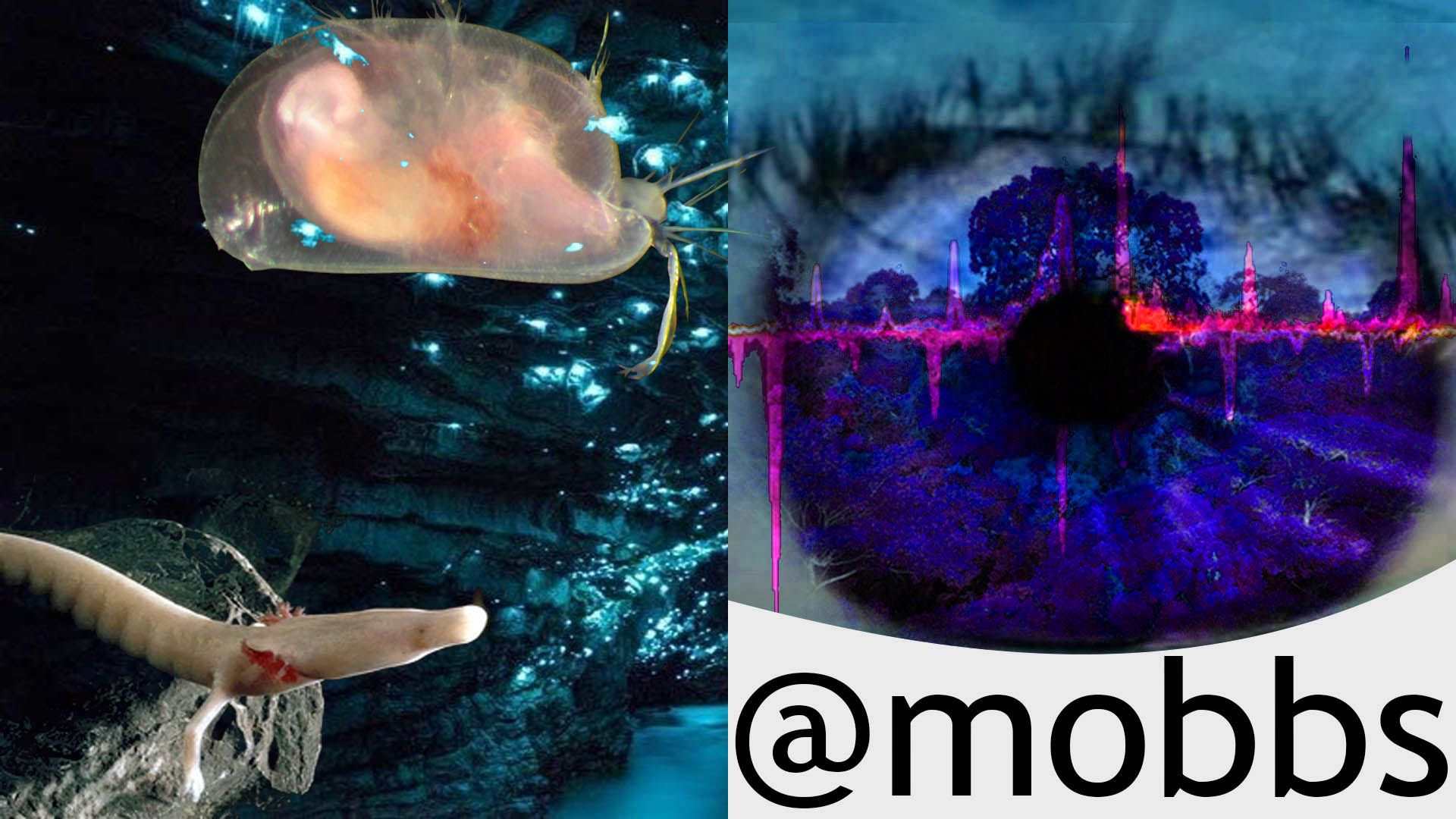
If you want to read about exactly how they survive without food or sunlight, see my previous post first
I'm going to start with the big, and work my way down to the small, which is typically how the gross scale works for some reason. Let's learn and appreciate the monsters of the dark!
Scorpions
Back in 2006, Ayalon cave in Israel was accidentally discovered when digging a quarry into the ground. Going inside, researchers discovered an initial 8 unknown species.
This sealed cave would have served as a safe haven for these animals for millions of years, when their related cousins on the surface would have been wiped out by humans, climate change and so forth.
The largest of creatures found was the Akrav israchanani, a scorpion that, like every species here discovered, had totally lost its eyes through evolutionary dumping of useless material.
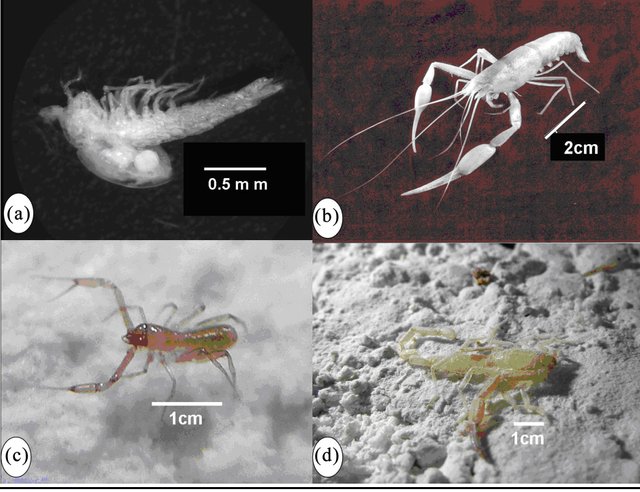
The strange thing was that, of the ten scorpions they found, none of them were alive. They had all died - and recently, within the last 15 years or so. Their remains were very well preserved, enough to learn about them regardless, and it was found that they use a kind of advanced motion detecting organ in their abdomen to get around and hunt.
Their extinction - for that is what is was - was no mystery nor coincidence. Even in this cave, sealed off from the rest of the world for millions of years, has been victim to human activity.
Ground water was being overpumped in this immediate area, causing the underground lake and thus food supply to shrink and starve the little critters into oblivion.
Movile Scorpion
In Movile cave, another endemic scorpion was discovered. Here you can see it munching on another freaky creature, a completely white crustacean, having lots its pigment; another evolutionary adaptation. Why waste energy on pigment when nobody is around to see it?
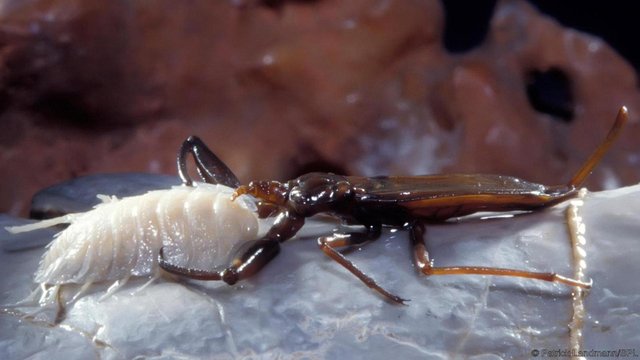
Spiders
Even further back in 1971, a new wolf spider was discovered in a cave in Hawaii. This spider are, of course, totally blind and as usually very endangered - no more than 30 have ever been counted.
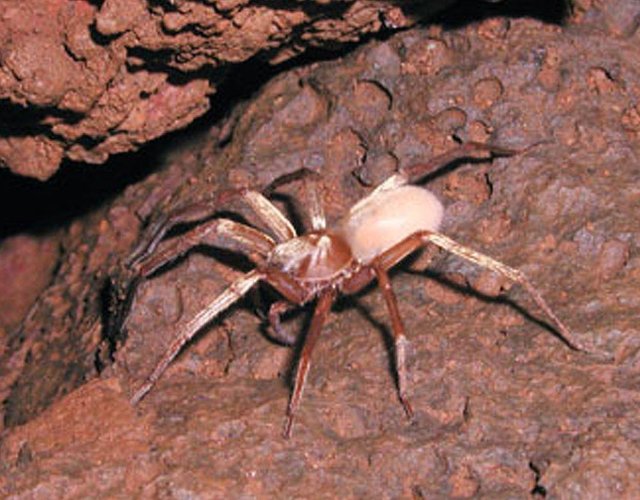
Another spider from New Zealand is faring a little better. It's much bigger too, at about 15 centimetres from leg end to leg end. Found only in a couple of specific caves in Southern New Zealand, you're pretty safe.
Centipedes

Criptos anomalans, a centipede at the top of the food chain. Blind again, this creature compensates with extra large anntennae.
If you think that one was creepy, check out this one:

This Malaysian centipede finds its way around simply by having 100 blind canes to bash around the cave system.
So now we have the cliche 'scary' creatures out the way, let's go straight up weird on you:
Dragons
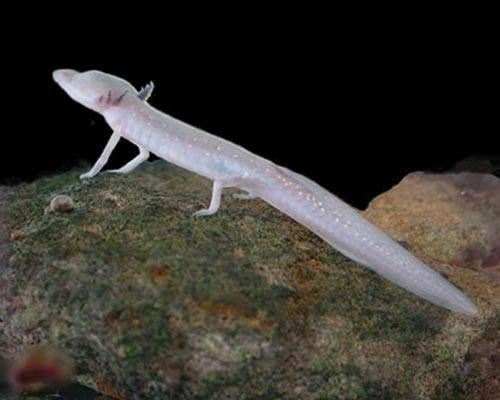
Ok not quite, but back in the 1800's, some cave salamanders were seriously mistaken for offspring of some nearby mother dragon, due to their creepy white appearance, and its drawings at the time seem to have at least a hint of creative flair:

The Olm, as this picture depicts, is in fact the only known salamander that lives its entire life underwater. This creature is surprisingly well adapted:
...its sensory system does come complete with photoreceptors that allow it to retain light sensitivity, a component several cave creatures lack, most notably the Phreatichthys andruzzii. The olm is also equipped with taste buds that can detect toxic chemicals, a lateral line that supports up to 15,000 Hz of underwater hearing, and a previously unknown organ on the crown of its head that scientists are now referring to as the ampullary organ. This salamander also has some sort of perception of the Earth’s magnetic field.
Source
Glow worms

Looks pretty lovely, right?
Let's inspect this a little closer...

Probably my favourite of them all, these worms are mean predators. You can't see them most of the time, they're hiding in the cave ceiling. What you can see is a sticky, deadly mixture of gooey urine and water. 1% gooey urine, if you were interested.
The worm - a larval form of a fungus gnat - first creates a kind of mucus-ey subway system along the ceiling, where it traverses back and forth, dropping sticky anal beads from various points, dangling down into the room below.
The glow coming out of its butt (for whatever reason) is irresistable to flying insects, and once they get stuck on the beads, they can never escape. The worm then reels them in slowly before devouring them, even if they are bigger than they are.
Why are they all blind, really?
Almost all sealed troglobites have no vision whatsoever. Why? Well, obviously there's no need for eyes; they're a lot of work, they take up a lot of energy. In the life of troglobites, energy is hard to come by, so they need to get rid of everything they can.
There was an interesting study into blind cave fish, in which researchers calculated the oxygen consumption of the blind fish compared to those surface cousins with perfect vision. It turns out that developing fish are saving 15% energy just by being blind. That's quite a save!
But it wasn's just the eyes. Even their brains were noted to have shrunk in the vision department. Though the study also points out that this may not only be about energy saving. Genes often have multiple purposes, and many can be reassigned to enhance other, more important things like, say taste.
As much as they do look scary to most people they are, like most animals, misunderstood and in danger. In many cases, like the above spider, there are just 30 or 40 on the planet.
Some fish live in a single pool, some snails like the tumbling cave snail are so vulnerable to the outside world that they die when exposed to it.
There are entire unique, endemic ecosystems in a single location that can be wiped out by a single tourist event or clumsy construction worker. Creatures that have, until we came along, thrived for millions of years.
Give 'em a little respect, keep your distance, and look at them in awe, not disgust!
Image Sources:
Extinct Scorpion
Water Scorpion
Wolf spider
Centipede
Malaysian cave centipede
Dragon salamander
Glow worms
Special thanks to @foundation for this great steemSTEM banner!

Ooowwwwwwww you got a couple one's I didn't know! Time to do some googling on them <3
That's the spirit =D
Those were really cool creatures!
Pfft, pathetically small antennae
There...is that better? They must work as lightning conductors too :P
haha yes, I'm satisfied... though it's the same one as in this post =P
I know...I could not find another species with bigger ones :P
I don't know which one I like more: the glowing worms or your banner.
@foundation: what about designing a glowing banner?
Haha that's where innovation comes from! worms and @foundation
Lol!